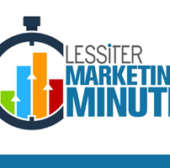
By Hayden Lessiter
Digital Media & Marketing Intern, Lessiter Media
hlessiter@lessitermedia.com
Here is a brief history of American advertising based on my recent and first ever trip to Washington D.C.
Quick Takeaways:
- Many of the key component to advertising were developed only in the last century and a half.
- American enterprise led most of the innovations in advertising techniques we see today.
- Advertising became increasingly focused on reaching specific demographics over time.
“Advertising is to a genuine article what manure is to land—it largely increases the product.” — PT Barnum, 1866
I was in D.C. in order to attend the Renewd Business Media Summit with my dad, Mike Lessiter. We arrived early, so I was able to explore the Capital, visit several museums and see famous landmarks I had only known from photos and movies.
Among my favorites was the Smithsonian’s National Museum of American History. It housed numerous artifacts from our nation’s history, but one particularly interesting exhibit was titled “American Enterprise”, detailing the history of business in our country. Being in my second year as a Lessiter Media intern, this summer in the digital media and marketing departments, I dived into the extensive history of advertising and how the industry is profoundly tied to American business.
Although forms of advertising have existed for thousands of years — perhaps as long as any sort of business has existed — the advertising industry as we know it today came about during the industrial revolution and grew up alongside the mass production industry.
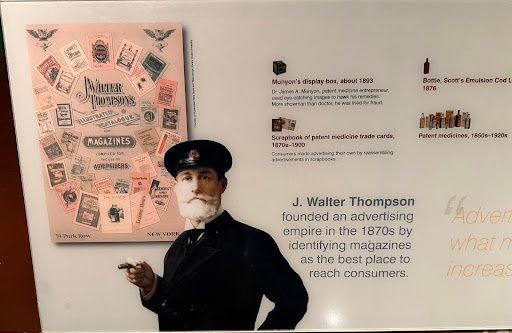
Walter Thompson's advertising company gained success through magazines.
The first true advertising agency was created by William Taylor in 1786 in London. It wasn’t until 1841 when the first advertising agent in America appeared on the scene with Volney B. Palmer of Philadelphia.
Palmer saw the opportunity to become an intermediary between the business and the newspapers, saving his clients time and allowing them to expand into other markets.
“Advertising has always been the expression of enterprise.” — Wayland Francis Ayer, 1895
The 1880s and '90s saw individual agents developing into larger agencies that employed many and offered services like planning, researching and coordinating campaigns. Advertising empires like the J. Walter Thompson company rose to prominence around this time.
This was also when advertisers, manufacturers and retailers began to create and use slogans for their products.
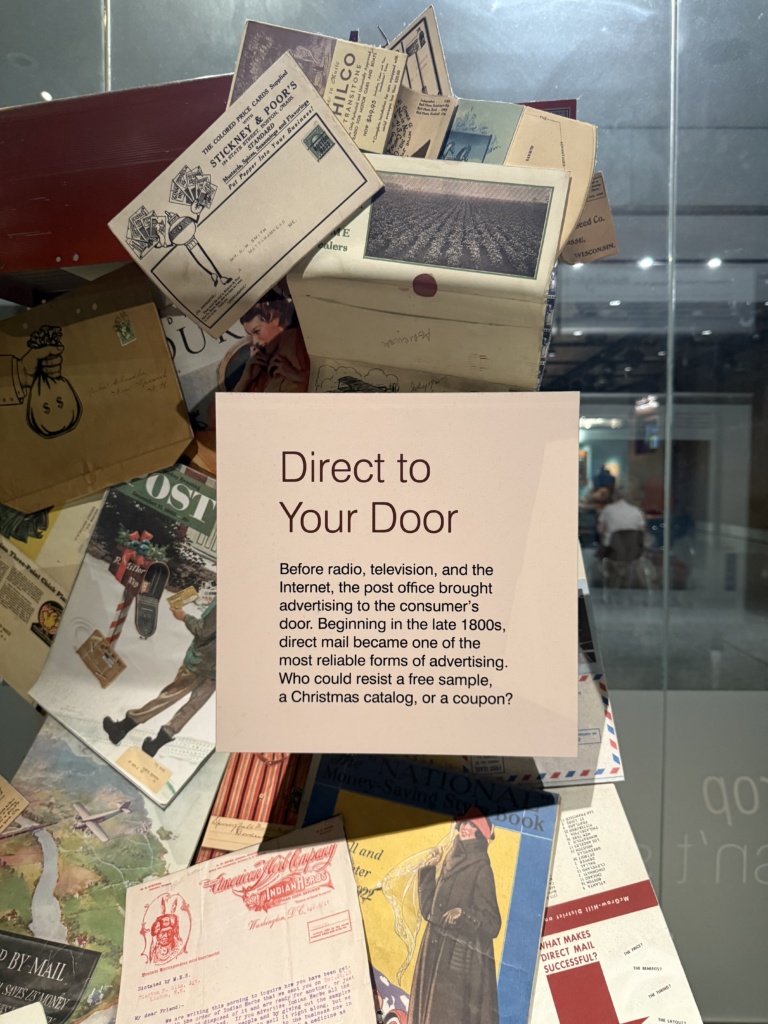
Direct to Your Door advertising had catalogs, coupons and samples.
Around this time, direct mail advertising became one of the most reliable forms of marketing. Before radio, TV or the internet, mailed items was one of the only ways to assure that your products were being seen.
In 1908, Walter Dill Scott published The Psychology of Advertising, and in the 1910s, advertisers began to form associations to share the secrets and best practices of the trade. The first Federal Income Tax law in 1913 notably exempted advertising costs for businesses.
In the 1910s, advertising dotted the landscape with signage on buildings, streetcars, store counters and windows, packaging, trading cards, magazines and newspapers. Advertisers consisted of printers, retailers, department store owners and manufacturers as well as advertising professionals like copywriters and graphic artists.
“Advertising is the spark plug on the cylinder of mass production.” — Bruce Barton, 1927
In the 1920s, graphic artists became a necessity for advertising work. The first sponsored radio show then arrived in 1922 with New York City station WEAF.
In 1923, Arthur C. Nielsen Sr. founded his market research firm, later coining the term “market share”.
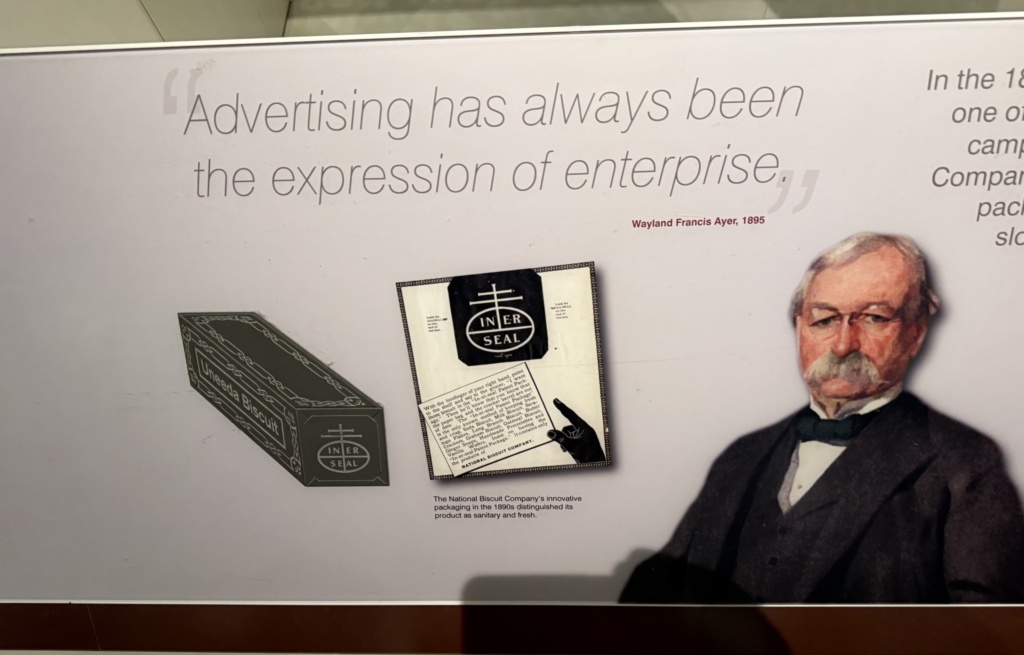
Wayland Francis Ayer founded N.W. Ayer & Son, an advertising agency which lasted 133 years.
The Advertising Age, a monthly trade journal (now known as Ad Age), formed in 1930.
In 1933 due to the Great Depression, ad spending had dropped in half. Life magazine was relaunched to become one of the largest carriers of advertising, and radio finally surpassed print in total advertising by 1938.
Going into the 40s-60s, advertisers invested into motivational research, television and worked with the government to promote American business. During World War II, the War Advertising Council was formed to recruit advertisers to support the war effort. After the war, the organization reorganized into the advertising council which still exists today. Gross advertising spending rose 75% in the 50s.
In the early years of television, an advertiser would sponsor an entire show like they would with radio programs. But by 1959, networks sold advertising in segments leading to multi-sponsored commercial breaks like today.
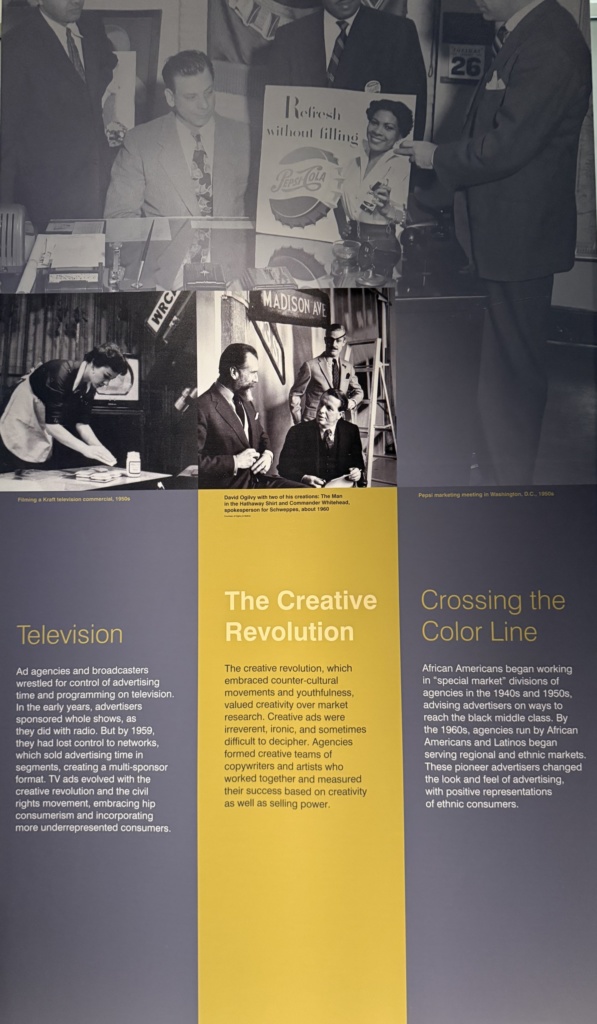
The 1950s to 1970s had drastic changes for the advertising world.
This time period the museum called the “Creative Revolution”, which embraced counter-cultural movements and youthfulness, valuing creativity and standing out to audiences rather than straight-forward market research. Advertisements became increasingly ironic, hip and incorporating underrepresented consumers.
The '60s also saw a jump in ad agencies run by minority groups like African Americans or Latinos, allowing them to more properly market to those communities.
The 1970s-2000s saw the dawn of targeted markets as Americans switched towards cable TV, allowing agencies to more directly target individuals. Cable TV had channels focused on distinct lifestyles, allowing advertisers to narrow their focus onto more specific demographics.
In 2000, more advertisers were spending money on cable TV than broadcast, but as the internet exploded onto the scene in the 1990s and 2000s, advertising was completely turned on its head.
In 1994, the first commercial online magazine Hotwired was the first website to sell advertising space, and Facebook first allowed for advertising on its site in 2007. By 2014 spending for online advertising rose dramatically.
We now live in a world where advertising companies have algorithms that know exactly what you are interested in based on data that consumers may unwittingly be giving them. The personalized advertisements can predict what a consumer will be thinking or doing, allowing for more specific ads than ever before.
This exhibit showcased the entrepreneurial spirit of America, and the innovations Americans have made to grow their businesses. Perhaps knowing how we got here can give us advertisers extra context into why we use the marketing strategies we do, and maintaining that innovative spirit can help us to improve our craft in the future.

Mike Lessiter and I in front of the White House.
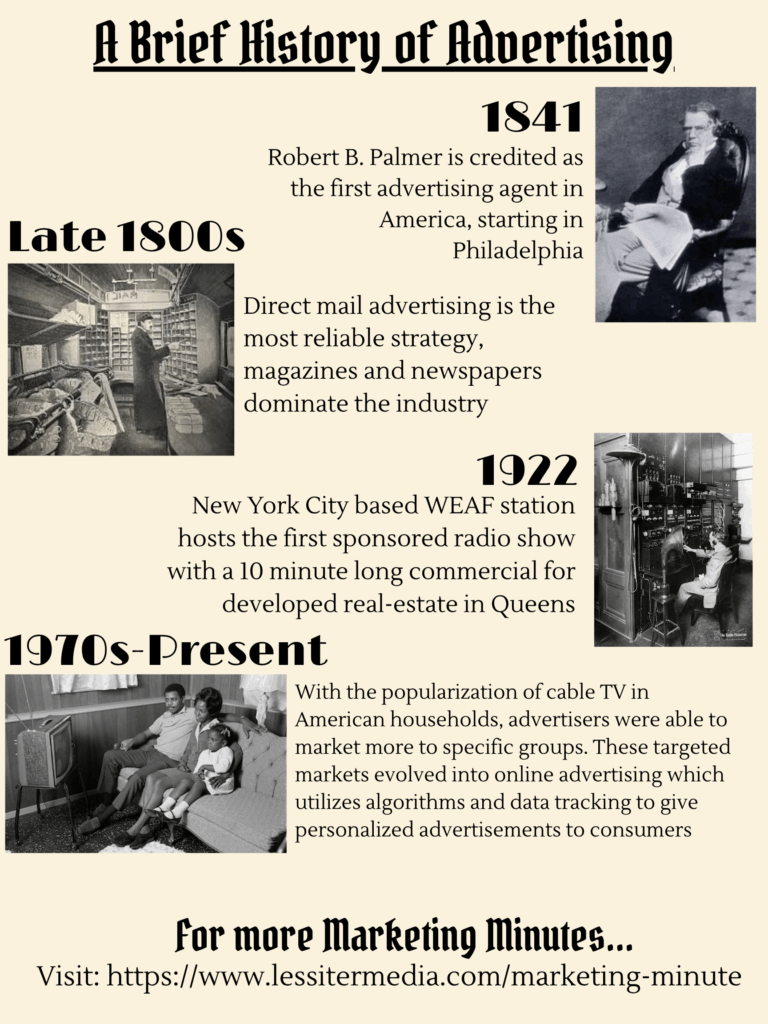
Sources: Smithsonian National Museum of American History, theradiohistorian.org



